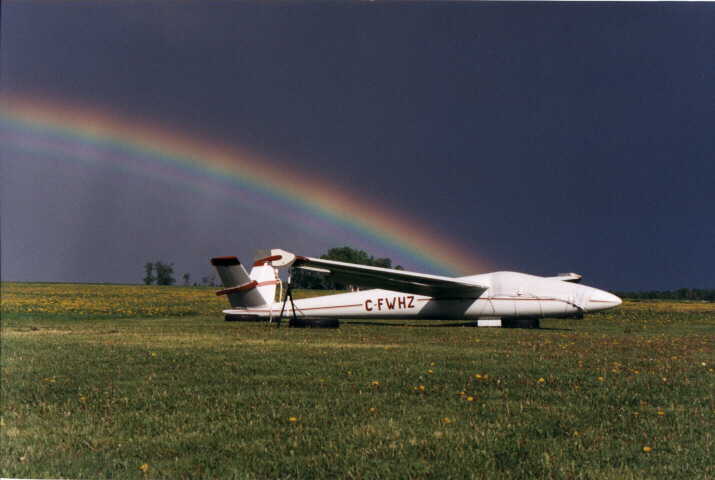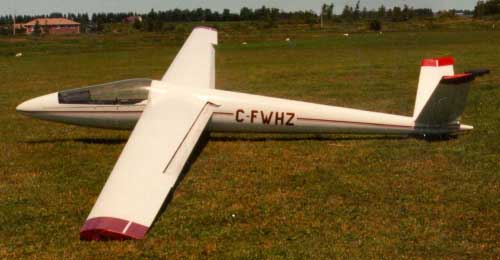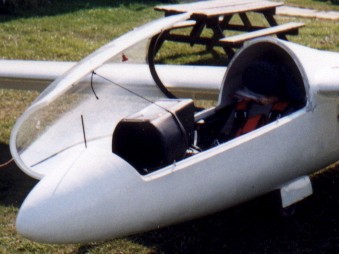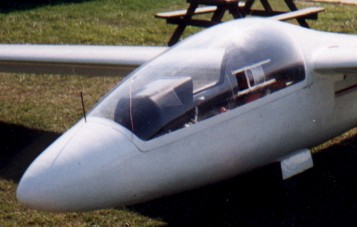
C-FWHZ
HP-14, Serial #12

First flown on October 15, 1967; the ship has 756 hours to the end of 1999.
Built by Norm Tucker and Elvie Smith near Ottawa Ontario.
Currently owned by John deJong and Alex Upchurch, and flying out of York Soaring near Arthur Ontario.
This is our first aircraft and we are both delighted with it. Between us we've put about 270 hours on the ship in the last four seasons, mostly flatland in southern Ontario but also some ridge down in Pennsylvania.

|
|
The ship is a very early example, built with the original forward cockpit layout that places a bar across the side rails over your shins to hold the upper end of the rudder pivot bar (the forward end of the mixer). Add in the fact that the instrument panel is almost full width right back to the #2 bulkhead, and the cockpit was a little cramped for legroom. In 1998 we installed an adjustable rudder pedal assembly that allows each of us to set the pedals in the most favorable position instead of sharing a compromise position (there's about 6" between positions!).

Last winter we built a new instrument panel that gave us more room. The front half resembles the pedestal design panel used in newer models, while the back was widened to accommodate the flasks and other hardware. The top surface is a solar panel that keeps the battery charged.
The original builders had fabricated a one-piece canopy that closely resembled the standard HP-14 shape, with a flat-wrapped forward half and blown bubble in the rear portion. While it had stood up reasonably well over the years, we found the optics were very poor in spots and that it had been made from thin plastic that was rather fragile. This last point was brought home September 1998 when a storm unexpectedly dropped 1"+ sized hailstones on the ship, punching a hole in the top of the canopy and cracking it in two other places. We managed to glue it back together so that we could finish the season, and then set about the process of replacing it over the winter.

The new canopy provides the same nose to toes glass area as the original canopy, plus it has a couple extra inches of headroom and a side window. With its large area and flowing curves, the new look has been jokingly referred to as a "DG-14".

In 1998, we also put
wing fences on the wing tips and found they really helped with the low speed handling. Before, the workload increased dramatically as the speed dropped below 50 knots but now with the fences you can thermal right down to 40 knots without feeling like you're trying to balance a broom vertically on the palm of your hand.
The finish is looking pretty ratty in places (especially where water leaked into the
old trailer), but we'll probably just keep patching it up for now until we are finished with the major alterations.
Alex.
December 1999.